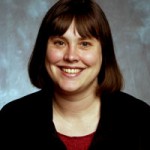 Congratulations to 3L Laura Steele, the winner of this year’s Frank DeGuire Award for the best student comment in the Marquette Intellectual Property Law Review. Laura’s terrific comment, entitled “Actual or Hypothetical: Determining the Proper Test for Trademark Licensee Rights in Bankruptcy,” is available on SSRN. Here is the abstract:
Congratulations to 3L Laura Steele, the winner of this year’s Frank DeGuire Award for the best student comment in the Marquette Intellectual Property Law Review. Laura’s terrific comment, entitled “Actual or Hypothetical: Determining the Proper Test for Trademark Licensee Rights in Bankruptcy,” is available on SSRN. Here is the abstract:
As trademark rights become an increasingly valuable asset in Chapter 11 reorganizations, it is critical for Congress and the courts to clarify how trademarks will be treated in bankruptcy, particularly where the debtor is a trademark licensee. Without clarity, Chapter 11 reorganization may not be a viable option.
This Comment urges that trademark licensees should not be stripped of a license simply because the licensee enters bankruptcy. Rather, where a licensee intends only to continue using an existing license under the terms of the existing agreement with the licensor, the licensee’s use of that license should be uninterrupted during reorganization. This recommendation, contrary to the position of trademark licensors, will not invade the province of trademark owners to control their marks.
To support this recommendation, this Comment examines the statutory frameworks of both trademark and bankruptcy law, legislative history of the Bankruptcy Code, and cases that illuminate the current circuit split over the rights of a trademark licensee in bankruptcy. Building on these elements, this Comment outlines an analytical approach that strikes a balance between the need for business reorganization and the duty of a trademark licensor to exercise control over its mark.
 Answer: They are the subjects of this year’s top student comments in the Marquette Law Review. The winners of the Gold and Silver Quill Awards were announced at last week’s Law Review banquet. Marvin Bynum won the Gold for “Testing the Waters: Assessing Wisconsin’s Regulatory Climate for Offshore Wind Projects,” while Donald Stroud won the Silver for “Beyond Deception: Finding Prudential Boundaries between Breach of Contract and Deceptive Trade Practice Act Violations in Wisconsin.” Both papers are on SSRN; “Testing the Waters” is here, and “Beyond Deception” is here. The abstracts appear after the jump. Congratulations to Marvin and Tripp for this well-deserved recognition!
Answer: They are the subjects of this year’s top student comments in the Marquette Law Review. The winners of the Gold and Silver Quill Awards were announced at last week’s Law Review banquet. Marvin Bynum won the Gold for “Testing the Waters: Assessing Wisconsin’s Regulatory Climate for Offshore Wind Projects,” while Donald Stroud won the Silver for “Beyond Deception: Finding Prudential Boundaries between Breach of Contract and Deceptive Trade Practice Act Violations in Wisconsin.” Both papers are on SSRN; “Testing the Waters” is here, and “Beyond Deception” is here. The abstracts appear after the jump. Congratulations to Marvin and Tripp for this well-deserved recognition!

